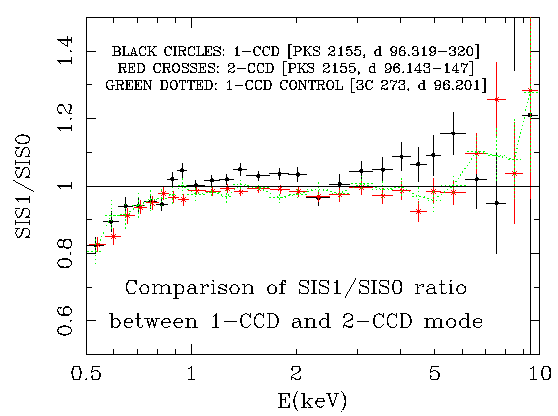An Interesting Connection Between 1-CCD and 2-CCD Mode Data
An observation of the Blazar PKS 2155 was made in 1-CCD mode in 1996/day 319-320 and then in 2-CCD mode in 1996/day 143-147. Figure 6 compares the SIS-1/SIS-0 ratios for these two observations. Remarkably it shows that the ratios are virtually identical! Moreover, the PKS 2155 ratios are compared with the SIS-1/SIS-0 ratio for 3C 273 from the 1996/day 201 observation. Figure 6 shows that the 3C 273 SIS-1/SIS-0 ratios are also virtually identical to both PKS 2155 SIS-1/SIS-0 ratios! This means that the relative degradation between SIS-1 and SIS-0 does not depend on CCD mode.
 |
Previous: Relation Betweein the Low-Energy SIS Degradation and Time
Next: Summary and Bottom Line
Back: "SIS Low-Energy Degradation" Main Page
This file was last modified on Monday, 30-Jul-2001 18:17:25 EDT
Curator:
HEASARC Guest Observer Facility
If you have any questions concerning ASCA, visit our Feedback form.

